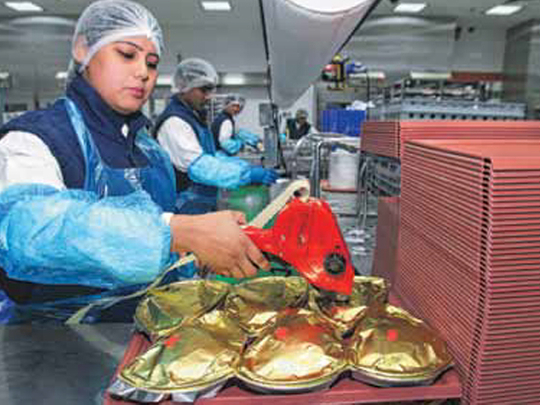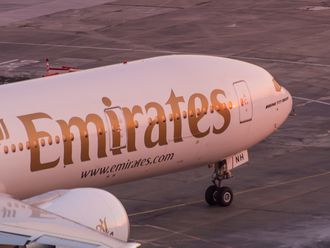
Dubai: Over the years, Emirates Flight Catering, with the help of German industrial design company i + o, has introduced progressive systems and high-tech machinery, driving toward greater efficiency.
It is a conscious decision, according to James A. Griffith, assistant vice president. He said: “We’re continuously ahead of the market, with a facility that is one of the most modern in the world.”
The building itself is equipped with a building management system (BMS), which controls all electromechanical and automated processes.
Lee Farrelly, assistant vice president of operations, said: “Our flight catering building is 55,000 square kilometres, with an inbound and outbound dock for transport vehicles incorporated into it like a tunnel. Everything is built upwards, to save space and accommodate the smallest possible carbon footprint.”
Specially designed trucks, called highloaders, bring in linen and food trays from flights through one of the 34 loading bays — and take back carts for departing flights. The highloaders are custom-made for A380 and A777 planes and are able to move eight metres high.
Moving indoors, in the cold kitchen where appetisers are made, and the bakery area, the inclusion of new technology has helped speed up the cooking process.
Automated blending machines quicken the creation of cupcakes and cheesecakes. Large deck ovens are in place for crème caramels, and rack ovens for yeast-based items.
A water jet cutter shoots out a razor-sharp stream of water with clinical precision, ensuring every slice of dessert is uniform.
In the hot kitchen, or the cooking area, completed dishes are put through the blast chiller at the very end of the cooking cycle as a safety measure. The machine brings down the temperature of food to 10 degrees Celsius for 45 minutes, preventing bacterial growth.
Another operation the building comprises, is the state-of-the-art warewash facility, which opened in August 2013.
The largest in the world, this mammoth enterprise has 26 washing lines, with the capacity to clean an average of “2.5 million pieces” of equipment a day.
All incoming cutlery, trays, trolleys that come through here are separated and washed in a series of specially designed machines.
An electric monorail conveyor system covers 2.55 kilometres and helps move over 7,500 meal carts and 13,000 containers a day.
Carts, meal trays, oven racks and standard units are transported on motorised carriers.
The facility also has a series of 600 metre-long vacuum waste pipes, which take garbage to a central waste collection point, where a dedicated environmental team recovers recyclable material.
The machinery and equipment is closely and constantly monitored for any sign of irregularity.
Farrelly said: “All machines are interlinked and managed at the control room. Engineers are always available and in case of a breakdown, they know immediately exactly where to go.”












